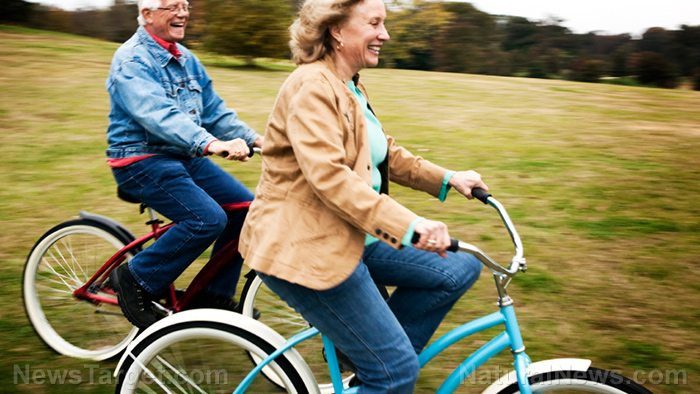Four seconds of high-intensity exertion throughout the day can prevent health damage caused by too much sitting
05/05/2020 / By Ethan Huff

As much of the world remains confined at home due to the Wuhan coronavirus (COVID-19) pandemic, many people are trying to come up with new ways to stay healthy and fit in lieu of being able to go to the gym. And a new study has good news for them, suggesting that an effective home routine is possible with mere four-second spurts of high-intensity exertion throughout the day.
Before the pandemic, tens of millions of working Americans were already spending a bulk of their days sitting behind computer screens punching keys, a routine that only got worse after the Wuhan coronavirus (COVID-19) hit. But it does not have to stay this way, especially if you are willing to get creative in revving up your metabolic juices.
Published in the journal Medicine & Science in Sports & Exercise, this new paper explains that periodically giving it your all for as little as just four seconds at a time can substantially decrease your risk of suffering the health consequences of too much sitting. And by giving it your all, we mean pedaling as fast as you can on your stationary bike, if you have one, or doing a quick wind-sprint or two in your yard.
Too much sitting, as you may already know, is linked to all sorts of chronic health damage, including heart failure and early death. One of the ways sitting does this is by increasing the amount of fatty acids, or triglycerides, in the bloodstream, probably due to the fact that bodily muscles are contracting much less than they should be, and are thus not breaking up these triglycerides to keep them moving.
High-intensity exercise, however, even in quick bouts, can make a huge difference in one’s health. Researchers found that these short, frequent bursts of exercise all throughout the day can make a substantial impact on one’s health, and more so than a single, moderately paced workout such as an hour-long run.
It is all about high-intensity, it turns out, meaning really pushing your body for a shorter period of time as opposed to kind of pushing your body for a longer period of time. Think sprinting as opposed to marathoning and you will get the gist of what this study ultimately found.
Just 160 seconds of high-intensity training spaced out throughout the day can burn fat and lower blood triglyceride levels
For their study, researchers from the University of Texas at Austin recruited eight healthy young men and women and asked them to spend a full day inside a laboratory seated, much like how office workers go about their day. The participants were only allowed to get up to eat or visit the restroom.
The next day, the volunteers returned to the lab and consumed a high-fat breakfast composed of melted ice cream and half and half, all the while being monitored by scientists over the course of six subsequent hours for their bodies’ metabolic response to these lifestyle and dietary habits.
On another day, the volunteers were instructed to sit yet again, but this time they got up for a few seconds every hour and sprinted on special stationary bicycles equipped with heavy flywheels and no resistance. They were told to push as hard as they could for four seconds, stop to rest for 45 seconds, and repeat the sequence five times.
This occurred once every hour for the duration of eight hours, totaling 160 seconds of exercise for the day. They then returned the following day and consumed a breakfast shake.
In the latter scenario, the participants arrived the second day with lower starting blood levels of triglycerides, and they also burned more fat over the following six hours. The first scenario, however, did not produce these results, suggesting that high-intensity training, even for just 160 seconds per day spaced out, is highly beneficial for metabolic health.
To learn more about how to stay healthy while spending most of your day at home, visit Cures.news.
Sources for this article include:
Submit a correction >>
Tagged Under:
exercise, fitness, heart health, high-intensity exertion, metabolic health, prevention, sitting, study
This article may contain statements that reflect the opinion of the author
RECENT NEWS & ARTICLES
AgingSecrets.News is a fact-based public education website published by Aging Secrets News Features, LLC.
All content copyright © 2018 by Aging Secrets News Features, LLC.
Contact Us with Tips or Corrections
All trademarks, registered trademarks and servicemarks mentioned on this site are the property of their respective owners.





















